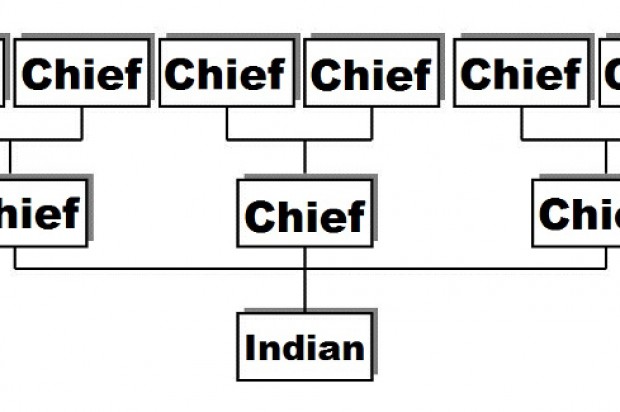
One of the most interesting patterns that I have observed again and again is that any organization tends to create layer upon layer of bureaucracy over time. Although I can’t find the reference, I remember reading somewhere that any organization increases bureaucracy with 0.7% per year. In my experience, this is a gross underestimation.
Often the increase in bureaucracy is caused by the most innocent of reasons, such as a lack of coordination, perceived lack of control by senior management, a crisis that should be avoided in the future by more oversight, etc. The result however almost always is another management layer being introduced, more administration, less value adding activities. On top of that, a further increase in the rigidity of the organization. The more organizational structure and ingrained work processes, the harder any transition and change will be to realize.
One of the positive examples of organizations being able to reduce management hierarchy is the transition to agile ways of working in software R&D. After the transition, rhe result often is that there are much fewer manager positions and the percentage of people doing value adding work goes up significantly. In fact, I once heard a story about a bank that had, in an attempt to bring the IT cost under control, fired everyone in IT that did not write code. Although this might be overly extreme, the bank didn’t seem to suffer much…
The problem described here, often referred to as “too many chiefs; too few (American) Indians”, doesn’t constrain itself to companies. Government institutions and universities often are even worse offenders of the principle. Returning to academia after having worked in industry for a decade hammered home that point quite nicely.
So, what to do about it? Well, My experience is that every organization needs a solid “spring cleaning” once every couple of years. Basically, a redesign of the organization with as few layers and as wide spans of control one can stomach. Allow front line staff to take significantly more responsibility. Have everyone in the old organization apply for jobs in the new organization and find a way to “retool” those without a role in the new organization for the remaining jobs. In practice, this often means that people in management positions need to return to doing value adding work. Once the new organization is in place, one can slowly introduce the few missing elements of coordination that are really needed.
Concluding, almost every organization that I work with (or for) suffers from the “too many chiefs; too few indians” problem. It results in all kinds of undesired consequences, ranging from too high overhead, reduced competitiveness and employee satisfaction to organizational rigidity and resistance to change. Instead, focus on resisting the calls for new overhead inducing activities and center all work around the customer and creating, capturing and delivering value. And when necessary, do some serious spring cleaning to clear out the accumulated dust.
To get more insights earlier, sign up for my mailing list at jan@janbosch.com or follow me on janbosch.com/blog, LinkedIn (linkedin.com/in/janbosch) or Twitter (@JanBosch).
Have you read “The laws of Parkinsson”
https://en.wikipedia.org/wiki/Parkinson%27s_law
There was a book published in the 1950’ies on that subject by professor Parkinsson
Todde
Cyril Northcote Parkinson was a British naval historian and author of some 60 books, the most famous of which was his best-seller Parkinson’s Law (1957), in which Parkinson advanced Parkinson’s law, stating that “work expands so as to fill the time available for its completion”, an insight which led him to be regarded as an important scholar in public administration and management.